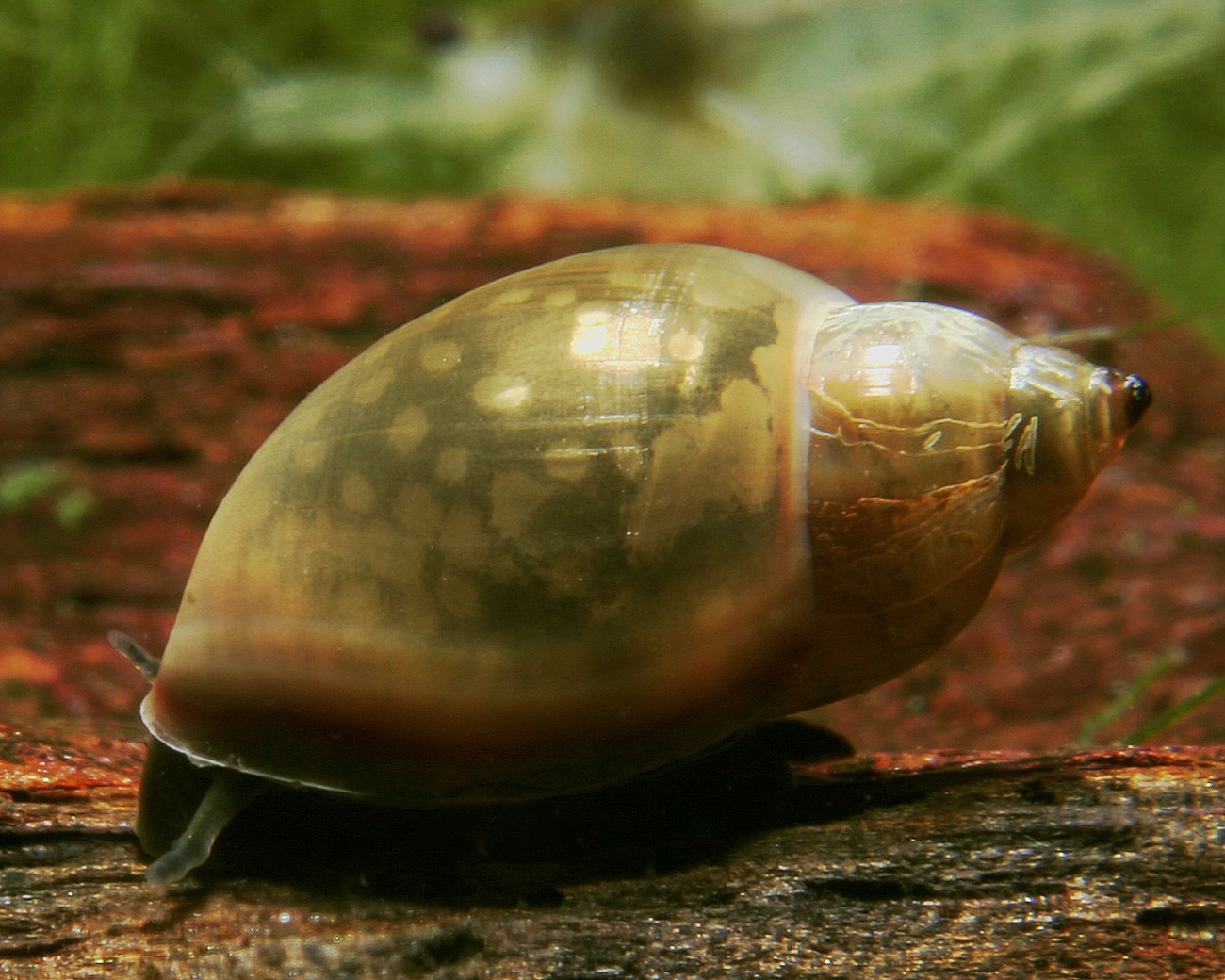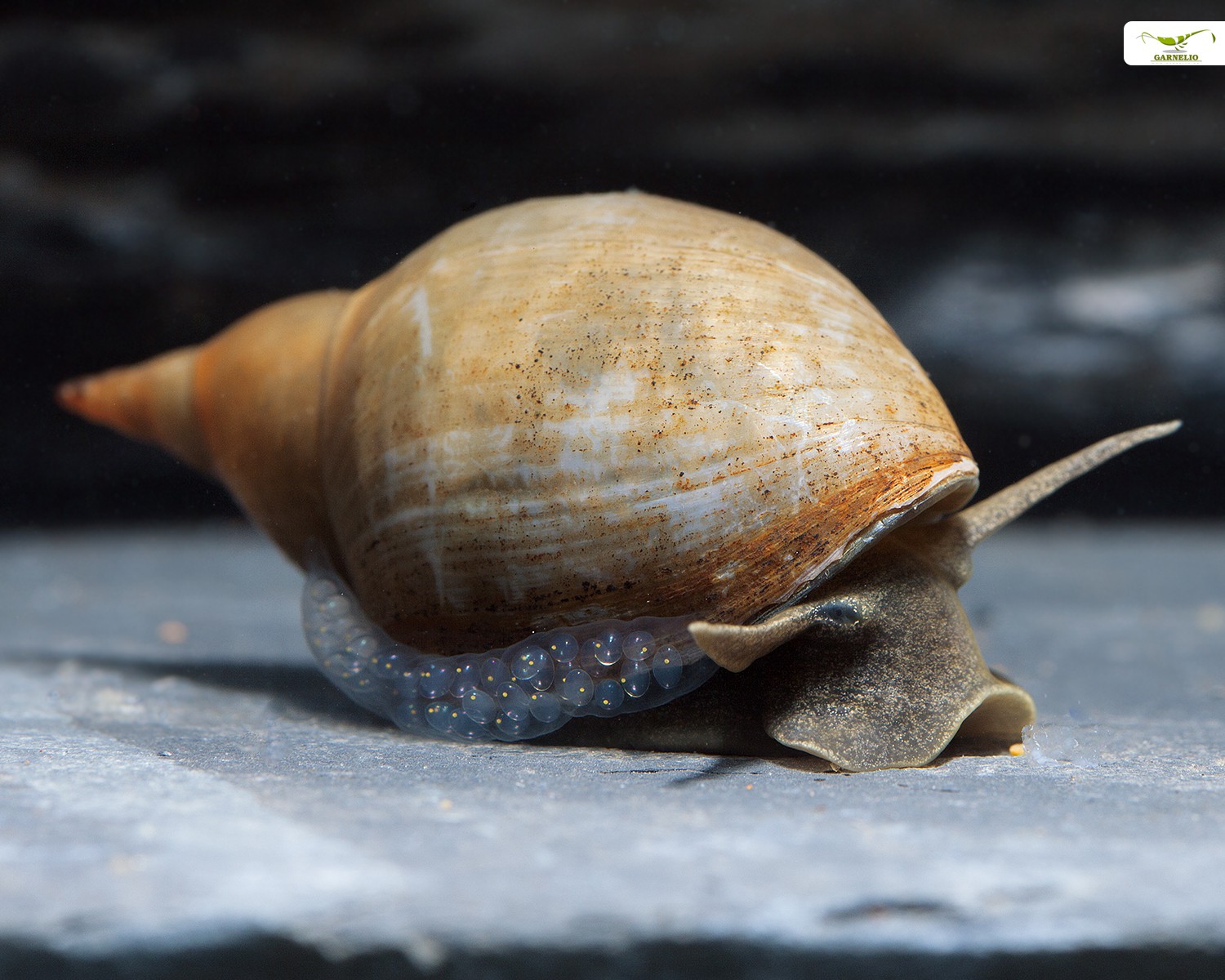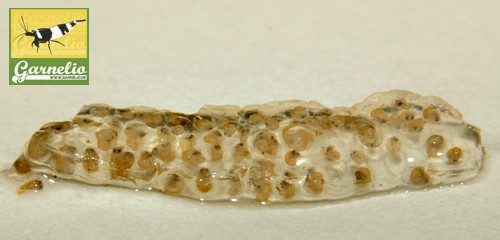Bubble snails - curse or blessing in the aquarium?
Table of contents
- How to recognize bubble snails in the aquarium?
- Food for bubble snails in the aquarium
- The reproduction of bubble snails
- Avoiding snail plagues in the aquarium
Bubble sn ails used to be feared in aquariums - you often brought the small snails in with plants, and they soon took over the aquarium. Especially in generously fed fish aquariums - to exaggerate - the plants were almost invisible because of the snails! And from the garden snails were already known as salad eaters and pests, so they had to be bad in the aquarium too!
In the meantime, one hears fortunately more often the voices of the reason, which recognized that bubble snails can take over an extremely important role in the ecosystem in the aquarium - that of the health police and garbage disposal!
How to recognize bubble snails in the aquarium?
Spring bubble snail, tip bubble snail - what exactly do I have in my aquarium? It's hard to say, because the bubble snails of the genera Physa and Physella all look pretty similar overall. It is even possible that hybrids crawl in our aquariums, which can not be assigned to a fixed species - but this is not a big deal, because the snails not only look very similar, but also live similar, eat similar and reproduce in the same way. So for this article, we can confidently lump them all together and simply talk about bubble snails.
Bubble snails can be recognized by their typical pattern - the dark, golden dotted mantle tissue shines through the transparent light amber snail shell. This pattern effects small bubbles on the snail shell. The left-wound shell of the bubble snail is somewhat bulbous and runs to the back conspicuously pointed.
The antennae of the bubble snail are thread-like thin and quite long, the body is light gray. When the oxygen demand of the aquatic snail increases, it may extend finger-like appendages of its mantle tissue over its shell, improving the area for oxygen uptake through the skin.
Bubble snails grow up to 1.2 cm long in nature, but in the aquarium the small snails usually remained much smaller.
Bubble snails crawl amazingly fast for a water snail, and they are repeatedly observed "dancing" in the water - crawling up almost invisible threads of slime in the water column.

Distinguish bubble snails from similar species
Pointed mud snails and other mud snails of the genus Radix look confusingly similar to the bubble snail at first glance, but if you pay attention to a few details, you can still tell the different aquatic snails apart quite easily.
- Shell coiling: Bubble snails are left coiled, mud snails are right coiled. If you hold the shell by the tip upwards, the shell opening is on the left side of bubble snails, on mud snails it is on the right side.
- Antennae: Theantennae of the bubble snail are filiform, while the antennae of the mud snails are triangular, with a broader base.

Food for bubble snails in the aquarium
Bubble snails eat biofilms and growth, they nibble on coatings on the aquarium glass, decoration, biofilms on plants and so on. They also love to eat dead plant tissue, mulm, all kinds of detritus, fish feces, shrimp feces and of course other fish food, food tabs, shrimp food and so on. Also brown autumn leaves are grazed by the bubble snails with pleasure.
Bubble snails are very good recyclers and clean up the aquarium effectively.
The reproduction of bubble snails
Bubble snails still have a bad reputation in aquaristics from earlier times: They reproduce really very, very well if they find a lot of food - maybe better than many other snail species in aquaristics.
After mating, the hermaphrodite snails lay sausage-shaped, usually slightly curved bulging jelly-like clutches, in which the eggs, initially visible as white dots, are embedded more or less chaotically in a jumble. Depending on the water temperature in the aquarium, the young bubble snails hatch after seven to twenty-one days. A bubble snail clutch can contain 10 to 50 eggs, depending on the age and size of the snail.
By the way, bubble snails are also capable of self-fertilization, so a single aquarium snail introduced with plants or decoration can be enough to establish a bubble snail population in the aquarium.
However, snail plagues are always caused by too much food - whether it is too much fish food or shrimp food that ends up in the aquarium, or food that cannot be digested well by the fish or shrimp, leftovers that have been left lying around, ... Bubble snails multiply excessively only to the extent that they find food in the aquarium. However, this is directly in the hands of the person who is responsible for the aquarium.

Avoiding snail plagues in the aquarium
To avoid a snail plague in the aquarium, it is advisable to critically check the feeding habits in the aquarium, especially in the case of bubble snails. The quality of the food for ornamental fish, shrimps, crayfish and so on in the aquarium should also be put to the test in the event of snail plagues. Indigestible components, which are excreted with the feces, serve the bubble snails directly as food and promote their desire to multiply. Plant debris that is not removed during water changes also serves as food for the bladder snails.
To avoid excessive reproduction of bubble snails in the aquarium, the following should be observed:
- Avoid overfeeding
- It is better to feed little more often than large amounts infrequently
- Feed high quality food
- Feed adapted, well digestible food, for example special food for carnivorous fishes
- Improve aquarium hygiene
- Suck off mulm and remains
If these points are observed, bubble snails in the aquarium are no longer dreaded pest snails, but useful little helpers that take care of the few leftovers in the aquarium. They are excellent health police and prevent bacterial growth because they destroy organic waste in the aquarium that would otherwise feed the bacteria.
